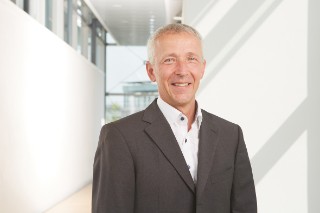Jahr
Year | Titel/Autor:in
Title/Author | Publikationstyp
Publication Type |
|---|
| 2023 |
Secondary Reflectors tested at High Temperatures and High Radiation Intensities
Gledhill, Sophie; Schöttl, Peter; Hildebrandt, Christina; Uhlig, Ralf; Wette, Johannes; Sutter, Florian |
Konferenzbeitrag
Conference Paper
|
| 2023 |
Techno-Economic Performance Analysis of a CSP-Driven CCGT with Stratified TES at Various DNI Levels and Demand Conditions Based on Transient Simulation
Rubio, Pedro; Rohani, Shahab; Ferreres Eceiza, Maitane; Bhanderi, Tatvakumar Arvindbhai; Weiss, Julius; Schöttl, Peter; Ferriere, Alain; Fluri, Thomas |
Konferenzbeitrag
Conference Paper
|
| 2023 |
Standard testing of absorber surface durability according to ISO 22975-3 versus measured thermal and high-humidity stress of absorber surface at extreme test sites
Kaltenbach, Thomas; Heck, Markus; Kaaya, Ismail |
Zeitschriftenaufsatz
Journal Article
|
| 2023 |
Case Study on Decarbonization Strategies for LNG Export Terminals using Heat and Power from CSP/PV Hybrid Plants
Hasni, Sabrina; Platzer, Werner |
Zeitschriftenaufsatz
Journal Article
|
| 2023 |
Socio-economic Impact of Concentrated Solar Power in China: Example of a 50 MW Parabolic Trough Plant
Xia, Ningzi; Torres Sartori, Francisco; Bern, Gregor; Heimsath, Anna |
Konferenzbeitrag
Conference Paper
|
| 2023 |
Compatibility Testing on a New Ceramic Filler Material for Packed Bed Thermal Energy Storage
Weiss, Julius; Müller, Ralf; Lang, Dimitrina; Schichtel, Martin; Fluri, Thomas |
Konferenzbeitrag
Conference Paper
|
| 2022 |
Case Study on Decarbonization Strategies for LNG Export Terminals Using Heat and Power from CSP/PV Hybrid Plants
Platzer, Werner; Hasni, Sabrina |
Konferenzbeitrag
Conference Paper
|
| 2022 |
Experimental Test Setup of an Airwall to Reduce the Convective Heat Loss in Solar Thermal Cavity Receivers
Bitterling, Moritz; Bern, Gregor; Fugmann, Hannes; Cohnen, Christopher; Fluri, Thomas; Sonnabend, Thomas; Karl, Martin |
Vortrag
Presentation
|
| 2022 |
The Role of Small-Scale CSP Plants in Future Energy Market Case Study: A Solar Tower Driven Combined GT and ORC with TES
Chandler, Nicholas; Rohani, Shahab; Fluri, Thomas |
Vortrag
Presentation
|
| 2022 |
Impact of Component Improvements within a Next Generation sCO2 CSP Plant
Chandler, Nicholas; Schöttl, Peter; Bitterling, Moritz; Bern, Gregor; Fluri, Thomas |
Konferenzbeitrag
Conference Paper
|
| 2022 |
Evaluation of a Small-Scale CSP Plant using POLYPHEM Technology, A Solar Tower Driven Combined GT and ORC with TES
Rohani, Shahab; Chandler, Nicholas; Schöttl, Peter; Ferreres Eceiza, Maitane; Fluri, Thomas |
Konferenzbeitrag
Conference Paper
|
| 2022 |
Effect of feature size on the reflective behaviour of the MorphoColorTM concept
Callies, Adrian; Wessels, Andreas; Bett, Andreas; Bläsi, Benedikt; Höhn, Oliver |
Konferenzbeitrag
Conference Paper
|
| 2022 |
Influence of fillers on performance of molten salt thermocline storage
Weiss, Julius; Wagner, Nils; Aprea, Vincenzo; Haas, Fridolin; Fluri, Thomas |
Konferenzbeitrag
Conference Paper
|
| 2021 |
Evaluation of reflectance measurement techniques for artificially soiled solar reflectors: Experimental campaign and model assessment
Picotti, G.; Simonetti, R.; Schmidt, Thomas; Cholette, M.E.; Heimsath, Anna; Ernst, Sebastian-Johannes; Manzolini, G. |
Zeitschriftenaufsatz
Journal Article
|
| 2021 |
Secondary Reflectors Tested at High Temperatures and High Radiation Intensities
Gledhill, Sophie; Hildebrandt, Christina; Uhlig, R.; Wette, J.; Sutter, F. |
Vortrag
Presentation
|
| 2021 |
Farbige gebäudeintegrierte solarthermische Kollektoren mit hohem Wirkungsgrad
Wessels, Andreas |
Konferenzbeitrag
Conference Paper
|
| 2021 |
Optimization of water management plans for CSP plants through simulation of water consumption and cost of treatment based on operational data
Rohani, Shahab; Went, Joachim; Duvenhage, D.F.; Gerards, R.; Wittwer, Christof; Fluri, Thomas |
Zeitschriftenaufsatz
Journal Article
|
| 2021 |
Improved Thermocline Initialization Through Optimized Inlet Design for Single-Tank Thermal Energy Storage Systems
Weiss, Julius; Ortega-Fernández, I.; Müller, Ralf; Bielsa, D.; Fluri, Thomas |
Zeitschriftenaufsatz
Journal Article
|
| 2020 |
Physical models of the bidirectional reflectance of solar receiver coatings
Bitterling, Moritz; Bern, Gregor; Wilson, Helen Rose; Heimsath, Anna; Nitz, Peter |
Zeitschriftenaufsatz
Journal Article
|
| 2019 |
Aktive solare Gebäudehülle zur dezentralen Energieerzeugung in Gebäuden
Kuhn, Tilmann |
Vortrag
Presentation
|
| 2019 |
Techno-Economic Assessment of New Material Developments in Central Receiver Solar Power Plants
Zoschke, Theda; Frantz, C.; Schöttl, Peter; Fluri, Thomas; Uhlig, R. |
Konferenzbeitrag
Conference Paper
|
| 2019 |
HiPIMS and DC magnetron sputter-coated silver films for high-temperature durable reflectors
Gledhill, Sophie; Steyer, K.; Weiss, Charlotte; Hildebrandt, Christina |
Zeitschriftenaufsatz
Journal Article
|
| 2019 |
Experimental Assessment of Simultaneous In-Situ Heliostats Calibration Methodology HelioControl at Themis Facility
Bern, Gregor; Bitterling, Moritz; Schöttl, Peter; Ferriere, A.; Volut, Yann; Heimsath, Anna; Nitz, Peter |
Konferenzbeitrag
Conference Paper
|
| 2019 |
Multi-dimensional performance evaluation of heat exchanger surface enhancements
Fugmann, Hannes; Laurenz, Eric; Schnabel, Lena |
Zeitschriftenaufsatz
Journal Article
|
| 2019 |
Thermal stability enhancement of D-mannitol for latent heat storage applications
Neumann, Hannah; Burger, D.; Taftanazi, Y.; Alferez Luna, Mayra Paulina; Haussmann, Thomas; Hagelstein, G.; Gschwander, Stefan |
Zeitschriftenaufsatz
Journal Article
|
| 2019 |
Heat Transfer and Pressure Drop Correlations for Laminar Flow in an In-line and Staggered Array of Circular Cylinders
Fugmann, Hannes; Schnabel, Lena; Frohnapfel, B. |
Zeitschriftenaufsatz
Journal Article
|
| 2019 |
Optimized Mirror Cleaning Strategies in PTC Plants Reducing the Water Consumption and the Levelized Cost of cleaning
Rohani, Shahab; Abdelnabi, N.; Fluri, Thomas; Heimsath, Anna; Wittwer, Christof; Pérez Ainsua, J.C. |
Konferenzbeitrag
Conference Paper
|
| 2019 |
Measuring and Modelling the BRDF of Solar Receiver Paints
Bitterling, Moritz; Bern, Gregor; Schöttl, Peter; Gledhill, Sophie; Wilson, Helen Rose; Heimsath, Anna; Nitz, Peter |
Konferenzbeitrag
Conference Paper
|
| 2018 |
Confidence interval computation method for dynamic performance evaluations of solar thermal collectors
Zirkel-Hofer, Annie; Perry, S.; Kramer, Korbinian; Heimsath, Anna; Scholl, S.; Platzer, Werner J. |
Zeitschriftenaufsatz
Journal Article
|
| 2018 |
Experimental performance evaluation of a laboratory-scale molten salt thermocline storage
Karl, Martin; Seubert, Bernhard; Müller, Ralf; Fluri, Thomas; Nitz, Peter |
Konferenzbeitrag
Conference Paper
|
| 2018 |
Compact Heat Exchanger Designs in Air-Cooled Condensers: Advantages and Drawbacks
Fugmann, Hannes |
Vortrag
Presentation
|
| 2018 |
Life Cycle Assessment of Thermal Energy Storage Materials and Components
Nienborg, Björn; Gschwander, Stefan; Munz, Gunther M.; Fröhlich, Dominik; Helling, T.; Horn, Rafael; Weinläder, H.; Klinker, F.; Schossig, Peter |
Zeitschriftenaufsatz
Journal Article
|
| 2018 |
Solarthermie in der Städtischen Energieversorgung - Energiewirtschaftliche Analyse und Quartier Freiburg-Gutleutmatten
Herkel, Sebastian |
Vortrag
Presentation
|
| 2018 |
Wire Structure Heat Exchangers: Compact Designs for Efficient Heat Transport
Fugmann, Hannes; Zapke, A. |
Vortrag
Presentation
|
| 2018 |
Techno-Economic Evaluation and Optimization of CSP Plants with ColSimCSP
Rohani, Shahab; Fluri, Thomas; Zoschke, Theda |
Vortrag
Presentation
|
| 2018 |
Künstliche Intelligenz für die Regelung solarthermischer Heizungsanlagen
Kramer, Wolfgang; Bitterling, Moritz |
Konferenzbeitrag
Conference Paper
|
| 2018 |
Künstliche Intelligenz für die kostengünstige und energetisch optimierte Regelung von Heizungsanlagen
Kramer, Wolfgang |
Vortrag
Presentation
|
| 2018 |
Kostenreduzierung von solarthermischen Systemen durch kombinierte technisch-wirtschaftliche Optimierung - Projekt TEWIsol
Kramer, Wolfgang; Oliva, Axel; Diels, F.; Tönnes, C. |
Konferenzbeitrag
Conference Paper
|
| 2018 |
Efficient modeling of variable solar flux distribution on solar tower receivers by interpolation of few discrete representations
Schöttl, Peter; Bern, Gregor; Rooyen, De Wet van; Flesch, J.; Fluri, Thomas; Nitz, Peter |
Zeitschriftenaufsatz
Journal Article
|
| 2017 |
Solare Wärmeversorgung von Quartieren
Scholte, C.; Kramer, Wolfgang; Bestenlehner, Dominik; Orozaliev, J. |
Vortrag
Presentation
|
| 2017 |
Optimierte Regelung von thermisch getriebenen Kühlsystemen - Simulation und Praxistest
Nienborg, Björn; Schnabel, Lena; Singler, J.; Dalibard, Antoine; Gürlich, D. |
Konferenzbeitrag
Conference Paper
|
| 2017 |
Gebäude mit überwiegend solarer Energieversorgung
Kramer, Wolfgang; Drück, Harald; Steinweg, J. |
Vortrag
Presentation
|
| 2017 |
Artificial Neural Networks (ANN) for the Prediction of Local Outside Temperatures and Solar Yields
Kramer, Wolfgang; Bitterling, Moritz |
Konferenzbeitrag
Conference Paper
|
| 2017 |
Neue Ansätze zur Kostenreduzierung von solarthermischen Systemen - Projekt TEWIsol
Kramer, Wolfgang |
Konferenzbeitrag
Conference Paper
|
| 2017 |
Analysis of Wind Direction and Speed Measurements in Arid Region - A Site Evaluation Using Data with Low Temporal Resolution
Klimm, Elisabeth; Guischard, F.; Weiß, Karl-Anders |
Konferenzbeitrag
Conference Paper
|
| 2017 |
Approaches for the optimized control of solar thermally driven cooling systems
Nienborg, Björn; Dalibard, Antoine; Schnabel, Lena; Eicker, U. |
Zeitschriftenaufsatz
Journal Article
|
| 2017 |
Solare Energieversorgungskonzepte für Wohngebäude - Messtechnischen Analysen zum Betriebsverhalten und Bewertungsverfahren für die Strom- und Wärmeversorgung
Oliva, Axel; Bestenlehner, Dominik; Drück, Harald; Bockelmann, F.; Peter, M. |
Konferenzbeitrag
Conference Paper
|


